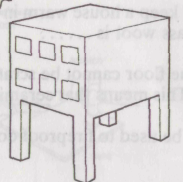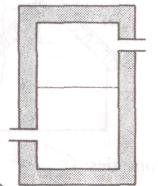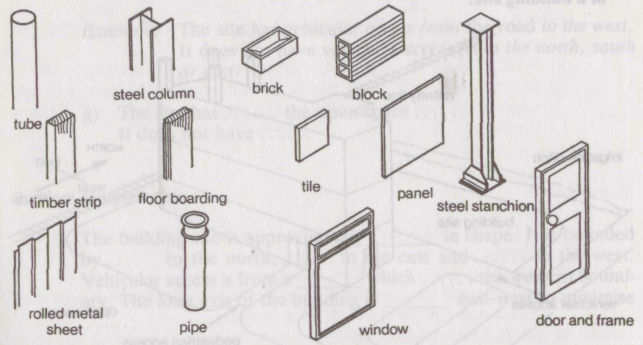
- •270102.65 "Промышленное гражданское строительство"
- •Оглавление введение
- •Part I unit1 Engineering
- •1. Answer the following questions.
- •4. A) Name some of the areas in which engineers work. What kind of engineers work in the areas which you have mentioned?
- •Unit II Civil Engineering
- •Text 1 Civil Engineering.
- •Unit III From the History of Building.
- •Text 2 From the History of Building.
- •Unit IV Fundamentals of Construction
- •Fundamentals of construction.
- •Additional vocabulary
- •Unit V Construction Materials
- •Construction materials
- •Additional vocabulary
- •Unit VI Properties and shapes.
- •Describe these buildings and components in a similar way:
- •Now complete these sentences with the properties:
- •Make sentences about other properties of materials from this table.
- •Study the diagrams of building components and classify these building components into three types:
- •Dialogue
- •Unit VII Education in the field of Civil Engineering in Russia and in the Murmansk region.
- •Education in the field of Civil Engineering in Russia and in the Murmansk region.
- •Unit VII Activities of Civil Engineers
- •Activities of Civil Engineers
- •1. So, in pairs look through this discussion on the application of cost control to building contracts and complete these notes:
- •2. Read and translate the dialogue and be ready to describe the sequence of events in the application of cost control to building contracts. Pay attention to the following words.
- •Dialogue
- •Answer these questions:
- •Part II Unit 1 Supplementary Texts
- •Climatic and weather conditions
- •Cladding
- •Concrete (a bit of history)
- •Plan of House a
- •Plan of House b
- •Unit 2 Grammar Exercises
- •14. Make sentences and write sentence chains.
- •Англо-русский словарь
Now complete these sentences with the properties:
The polythene membrane can prevent moisture from rising into the concrete floor. This means that polythene is ….
The T-shaped aluminium section can resist chemical action, i.e. aluminium is ….
The stone block cannot be lifted without using a crane. This means that stone is ….
The corrugated iron roof cannot prevent the sun from heating up the house, i.e. iron is …
Glass wool can help to keep a house warm in the winter and cool in the summer, i.e. glass wool is …
The ceramic tiles on the floor cannot be scratched easily by people walking on them. This means that ceramic tiles are ….
Asbestos sheeting can be used to fireproof doors. In other words asbestos is …
Black cloth blinds can be used to keep the light out of a room, i.e. cloth is …
Make sentences about other properties of materials from this table.
Steel |
has the property of |
good sound insulation. |
Stone |
good thermal insulation. |
|
Glass wool |
high compressive strength. |
|
Brick |
high tensile strength. |
This means |
it can resist high compressive forces. |
it can resist high tensile forces. |
|
it does not transmit heat easily. |
|
it does not transmit sound easily. |
Answer the following questions.
|
Why is glass used for window panes? Because glass is …..
Why is glass wool used to keep the heat in hot-water tanks? Because glass wool has the property of ….
Why is some steel covered with a thin layer of zinc? Because zinc is …..
Why are some fire doors covered with asbestos sheets? Because asbestos is ….
Why are some metal sheets formed into a corrugated shape? Because the corrugated shape makes the sheet …
Why is concrete used for the columns of a building structure? Because …. |
Task 7. Look and read:
These are drawings of the three types of components used in building:
Study the diagrams of building components and classify these building components into three types:
Section
Unit
Compound unit
B. Now read the dialogue. Copy and complete this table to classify the components:
|
Section |
Unit |
Compound unit |
Name of the component |
|
|
|
|
|
|







